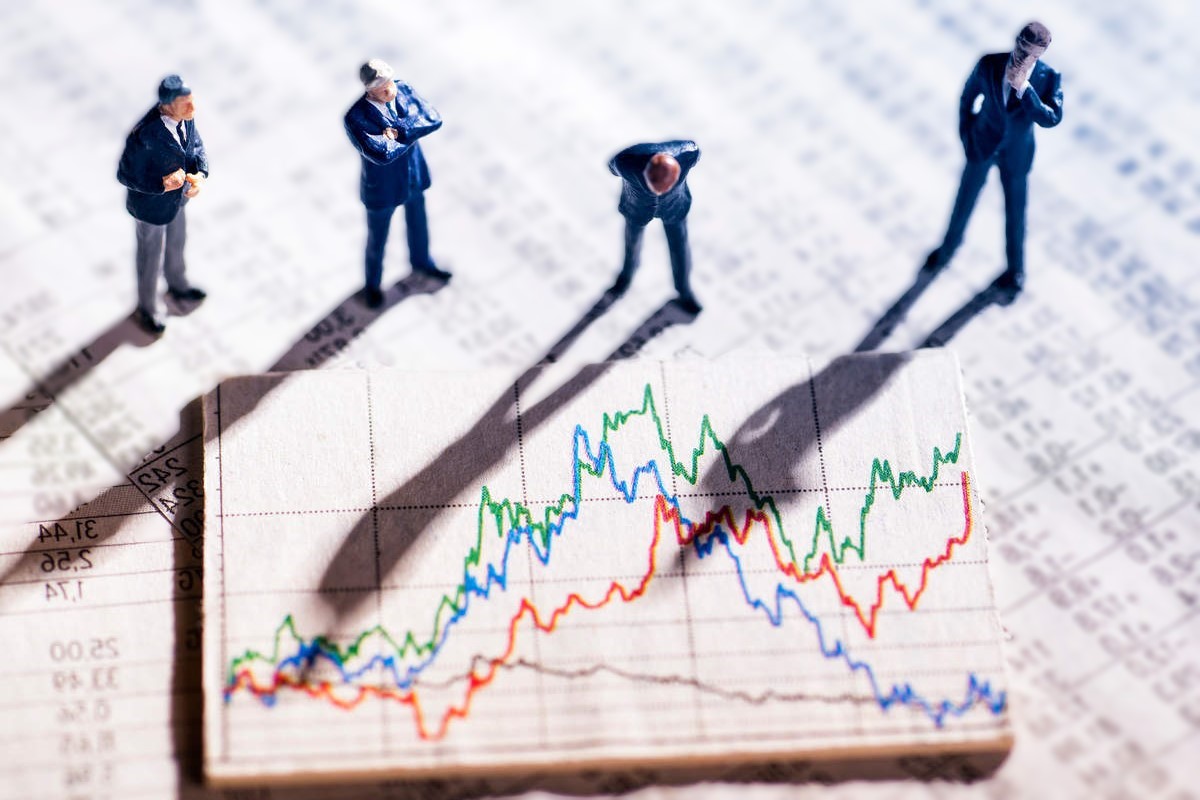
Market volatility can feel like a rollercoaster ride, but understanding it can help you make smarter financial decisions. Volatility refers to the rate at which the price of a security increases or decreases for a given set of returns. It's a measure of risk and uncertainty in the market. High volatility means prices can change dramatically in a short period, while low volatility indicates more stable prices. Investors often watch volatility closely because it can impact their portfolios significantly. Whether you're a seasoned trader or just starting, knowing the ins and outs of market volatility can be a game-changer. Buckle up as we dive into 35 intriguing facts about market volatility that will help you navigate these choppy waters with confidence.
Key Takeaways:
- Market volatility can cause big price swings in financial markets. It's influenced by things like economic data, political events, and even natural disasters. Investors need to be prepared for ups and downs!
- Understanding market volatility can help investors make better decisions. Emotions like fear and greed can drive market behavior, so it's important to stay calm and think long-term.
Understanding Market Volatility
Market volatility refers to the frequency and magnitude of price movements in financial markets. It can be influenced by various factors, including economic data, political events, and investor sentiment. Here are some intriguing facts about market volatility:
-
Volatility Index (VIX): Often called the "fear gauge," the VIX measures market expectations of near-term volatility. A high VIX indicates high uncertainty.
-
Historical Volatility: This measures past market movements. It is calculated by analyzing the standard deviation of returns over a specific period.
-
Implied Volatility: Unlike historical volatility, implied volatility is forward-looking. It reflects the market's expectations for future volatility based on options prices.
-
Black Monday: On October 19, 1987, global stock markets crashed, with the Dow Jones Industrial Average plunging 22.6% in a single day. This event is a classic example of extreme market volatility.
-
Flash Crashes: These are rapid, deep, and volatile price declines in a market. The 2010 Flash Crash saw the Dow Jones drop nearly 1,000 points within minutes.
Causes of Market Volatility
Several factors can cause market volatility. Understanding these can help investors navigate turbulent times more effectively.
-
Economic Data Releases: Reports on employment, inflation, and GDP can cause significant market movements as investors react to new information.
-
Political Events: Elections, policy changes, and geopolitical tensions can create uncertainty, leading to increased volatility.
-
Natural Disasters: Events like hurricanes, earthquakes, and pandemics can disrupt markets, causing sudden price swings.
-
Corporate Earnings Reports: Companies releasing their quarterly earnings can lead to volatility, especially if results differ from market expectations.
-
Interest Rate Changes: Central banks adjusting interest rates can impact market sentiment, leading to increased volatility.
Measuring Market Volatility
Various tools and metrics help measure and analyze market volatility. These tools provide insights into market behavior and potential future movements.
-
Standard Deviation: A statistical measure that quantifies the amount of variation in a set of data points. Higher standard deviation indicates higher volatility.
-
Beta: This measures a stock's volatility relative to the overall market. A beta greater than 1 indicates higher volatility than the market.
-
ATR (Average True Range): A technical analysis indicator that measures market volatility by decomposing the entire range of an asset price for that period.
-
Bollinger Bands: These are plotted two standard deviations away from a simple moving average. They help identify overbought or oversold conditions.
-
Moving Average Convergence Divergence (MACD): A trend-following momentum indicator that shows the relationship between two moving averages of a security’s price.
Impact of Market Volatility
Market volatility can have profound effects on investors, companies, and the economy. Here are some ways it impacts different stakeholders.
-
Investor Behavior: High volatility can lead to panic selling or irrational buying, often driven by fear or greed.
-
Portfolio Diversification: Volatility highlights the importance of diversification. A well-diversified portfolio can help mitigate risks associated with market swings.
-
Risk Management: Investors and fund managers use various strategies, such as hedging, to manage risks associated with volatility.
-
Market Liquidity: During volatile periods, liquidity can dry up, making it harder to buy or sell assets without affecting prices.
-
Corporate Decision-Making: Companies may delay investments or strategic decisions during volatile times due to uncertainty.
Strategies to Handle Market Volatility
Investors can employ several strategies to navigate market volatility. These strategies aim to protect investments and capitalize on market movements.
-
Dollar-Cost Averaging: Investing a fixed amount regularly, regardless of market conditions, can reduce the impact of volatility.
-
Hedging: Using financial instruments like options and futures to offset potential losses in an investment portfolio.
-
Stop-Loss Orders: Setting predetermined price levels at which an asset will be sold to limit losses.
-
Asset Allocation: Diversifying investments across different asset classes to spread risk.
-
Long-Term Perspective: Focusing on long-term goals rather than short-term market fluctuations can help investors stay calm during volatile periods.
Historical Examples of Market Volatility
History provides numerous examples of market volatility. These events offer valuable lessons for investors.
-
The Great Depression: Starting in 1929, this period saw extreme market volatility, with the stock market losing nearly 90% of its value.
-
Dot-Com Bubble: In the late 1990s, excessive speculation in internet-related companies led to a massive market crash in 2000.
-
2008 Financial Crisis: Triggered by the collapse of Lehman Brothers, this crisis led to severe market volatility and a global economic downturn.
-
Brexit Vote: The 2016 referendum where the UK voted to leave the EU caused significant market volatility due to political and economic uncertainty.
-
COVID-19 Pandemic: The outbreak in 2020 led to unprecedented market volatility as economies worldwide shut down to contain the virus.
Psychological Aspects of Market Volatility
Understanding the psychological aspects of market volatility can help investors make better decisions. Emotions often drive market behavior.
-
Fear and Greed: These two emotions are powerful drivers of market volatility. Fear can lead to panic selling, while greed can cause irrational buying.
-
Herd Behavior: Investors often follow the crowd, leading to exaggerated market movements during volatile periods.
-
Overconfidence: Some investors may overestimate their ability to predict market movements, leading to risky decisions during volatile times.
-
Loss Aversion: The tendency to prefer avoiding losses over acquiring equivalent gains can impact investment decisions during volatile markets.
-
Anchoring: Relying too heavily on the first piece of information encountered can lead to biased decisions during periods of market volatility.
Understanding Market Volatility
Market volatility can be a wild ride. Knowing the facts helps you stay ahead. Volatility isn't always bad; it can mean opportunities for gains. But, it also means risks. Investors need to stay informed and adaptable. Keep an eye on economic indicators and global events. Diversify your portfolio to spread risk. Use tools like stop-loss orders to protect your investments. Stay calm during market swings. Emotional decisions often lead to losses. Educate yourself continuously. The more you know, the better you can navigate the ups and downs. Remember, every market has cycles. What goes down often comes back up. Stay patient and stick to your investment strategy. With the right knowledge and approach, you can turn market volatility into an advantage. Keep learning, stay vigilant, and make informed decisions.
Frequently Asked Questions
Was this page helpful?
Our commitment to delivering trustworthy and engaging content is at the heart of what we do. Each fact on our site is contributed by real users like you, bringing a wealth of diverse insights and information. To ensure the highest standards of accuracy and reliability, our dedicated editors meticulously review each submission. This process guarantees that the facts we share are not only fascinating but also credible. Trust in our commitment to quality and authenticity as you explore and learn with us.


